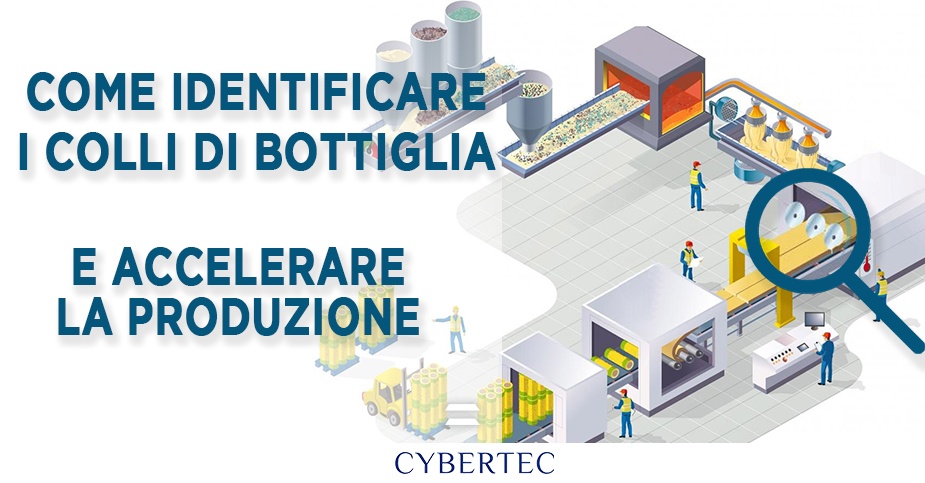A bottleneck, within a process management context, is a point where the flow of activity is compromised, slowed down or even stops completely. Often bottlenecks occur because there is not enough capacity to manage the flow of activities/information and here capacity means any type of capacity: data processing, software capacity, people, etc. Therefore, it is of fundamental importance to know how to manage them better and avoid slowdowns and other problems.
Short- and long-term bottlenecks
There are both short-term and long-term (or chronic) bottlenecks: short-term bottlenecks are normally temporary and usually not a significant problem (examples may be an employee taking days off/vacation or a temporarily unavailable machine); long-term bottlenecks occur continuously and can significantly slow down production over time (e.g. when a machine does not run efficiently and ends up generating a queue).
When does a bottleneck occur?
A bottleneck tends to emerge when the resource involved in a process step (resource understood as a company department or individual machine) is already working at full capacity and cannot handle any additional demand. Bottlenecks occur when the incoming workload reaches the person/machine faster than it can handle it, thus limiting the overall speed of the entire process. Having a bottleneck in the process therefore tends to create a tail and increase the overall cycle time.
What causes bottlenecks?
As mentioned, bottlenecks often occur because there is not enough capacity to handle the flow of activity or information. A congestion in a work phase can be caused by inadequate tools or machinery, inadequately trained personnel, departments with poorly structured processes. In other cases, bottlenecks emerge when there is an increase in demand that has an impact on orders and consequently on the increase in the production flow.

An example of a bottleneck in production
It may be useful to exemplify the bottleneck to visualize its causes and consequences well. If you take a confectionery company as an example, there could be a line consisting of the following phases: the first work centre in which the candy cores are created, a second step in which the candies are dipped to cover them with the outer layer, a further station in which the candies are manually wrapped and wrapped by the operators, and finally the station responsible for packaging before moving on to the processing and shipping sections.
In this example, the step that takes the most time and skill is manual wrapping of candy. If a slowdown occurs at this packaging station, some candy could pass to the packaging station without being wrapped in the paper and the pieces should be discarded, creating inefficiencies and waste.
If the bottleneck of the packing station was in a situation of serious difficulty, the line would have to stop and the workers of the packing and filling stations would remain inactive until the bottleneck was eliminated.
The most obvious solution would be to hire additional workers at the filing station, but the company should balance the increased costs of added staff with the benefits of reduced waste and idle operators.
Another solution could be to improve the skills of the workers at the packing station and ensure that their stocks are sufficient and easily accessible.
A third solution could be to slow down production before the winding station. This may not be appealing to the company, but compared to the loss to waste and idleness, it may become feasible.
Consequences of bottlenecks in production processes
If not well managed, bottlenecks in production cause stalls and slowdowns in the production flow, creating on the one hand an accumulation of WIP and on the other delivery delays and stock-out risks. Costs increase because the same resources are produced more slowly and therefore smaller quantities are produced. The biggest risk, however, is that the backlog, if not well managed, risks increasing exponentially until the line stops.
Eliminating or managing bottlenecks will therefore allow your company to be more efficient and streamlined, reduce warehouses and avoid stock outs and delivery delays. Your production will be much more flexible to changes in both demand and product.
Better management of bottlenecks will help you prevent and avoid situations of production stalemate with the risk of significant efficiency losses and increased costs.
How to identify bottlenecks in production?
So how do you spot bottlenecks and prevent production stalls? You can avoid illusions such as attempting production planning with Excel and find the answers you are looking for in the article “How to identify bottlenecks and speed up production“.
Learn how to eliminate bottlenecks in your business
Contact a supply chain expert and ask for their opinion on your production structure, internal processes and the tools used. Find out what obstructions it presents and what benefits you can obtain for your tasks, as well as what improvements your company can gain by implementing a modern planning software solution to integrate perfectly with your ERP management system. Contact an expert today.

